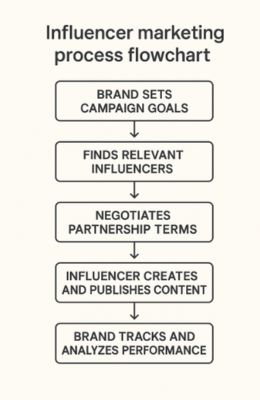Influencer marketing has evolved into a multi-billion-dollar industry, with projections estimating it will be worth nearly $30 billion in the U.S. alone. As consumers increasingly seek genuine recommendations over polished ads, influencer marketing has become an essential part of modern brand strategies, helping businesses boost visibility, build trust, and drive real engagement.
But what is influencer marketing, and how does it work? In this guide, we’ll break down:
- The definition of influencer marketing
- How influencer campaigns function
- Why it’s a must-have for modern brands
- Key platforms for influencer marketing
- Types of influencers brands can work with
Whether you’re new to influencer partnerships or looking to refine your approach, understanding the fundamentals will help you leverage this high-impact marketing channel effectively.

What Is Influencer Marketing?
Influencer marketing is a collaboration between brands and individuals with a dedicated, engaged following, often on social media platforms like Instagram, TikTok, YouTube, or LinkedIn. These individuals, known as influencers, who can range from niche micro-creators to global celebrities, help promote products or services in an authentic, relatable way
Unlike traditional advertising, influencer marketing relies on the authentic connection between influencers and their audience. Followers trust influencers because they view them as relatable, credible, and genuine, not just as spokespersons for brands. This trust gives influencers significant power to sway buying behavior, making them valuable partners for brands looking to expand reach, boost awareness, and drive real engagement in a way that feels organic, not forced..
Learn more about how to launch your first campaign with our complete guide to starting influencer marketing.
How Influencer Marketing Works (Step-by-Step)
Influencer marketing isn’t just about paying someone to post about your product, it’s a strategic process that, when done right, drives real results. Here’s a step-by-step breakdown of how successful campaigns work.

Step 1: Define Your Goals
Before reaching out to influencers, clarify what you want to achieve:
- Brand awareness (reach new audiences)
- Engagement (likes, comments, shares)
- Conversions (sales, sign-ups, downloads)
- Trust & credibility (UGC, testimonials)
Clear goals help shape the entire campaign strategy.
Step 2: Find Relevant Influencers
Once the goals are set, look for influencers who align with your target audience and values. Important factors to consider include:
- Niche relevance (Does their audience match your target customers?)
- Follower size (Nano/Micro = higher engagement; Macro = broader reach)
- Engagement rate (Look for 3%+ on Instagram, 1%+ on TikTok)
- Authenticity (Do they genuinely use products like yours?)
Tools: Use platforms like Hypefy to filter influencers by metrics.
Step 3: Choose the Collaboration Type
After selecting influencers, brands negotiate the terms of the collaboration. This can include:
- Sponsored posts (Paid content with clear #ad disclosure)
- Affiliate marketing (Earn commissions per sale)
- Gifted campaigns (Free products in exchange for posts)
- Long-term ambassadorships (Ongoing partnerships for deeper alignment)
Step 4: Set Clear Expectations
Outline deliverables in a contract or brief:
- Content format (Reel, static post, story, blog?)
- Key messaging (Must-include features, hashtags, CTAs)
- Timeline (Posting dates, approval process)
- Disclosures (FTC-compliant #ad or #sponsored tags)
Step 5: Campaign Goes Live
Once agreements are in place, influencers create and publish content across platforms, such as Instagram posts, TikTok videos, YouTube reviews, or blog articles. Content typically highlights the product or service in a way that feels genuine to the influencer’s usual style, maintaining trust with their audience.
Step 6: Track & Analyze
After the campaign launches, monitor your performance using KPIs like:
- Engagement metrics (Likes, comments, shares)
- Traffic (UTM links, Google Analytics)
- Conversions (Promo codes, affiliate sales)
- ROI (Revenue generated vs. campaign cost)
6 Types of Influencer Marketing Campaigns
Influencer marketing isn’t one-size-fits-all. Different campaign styles serve different business goals, from brand awareness to direct sales. Understanding these approaches helps you choose the right strategy for your campaign. Here are the most effective types of influencer marketing strategies:
1. Sponsored Content
The most common form of influencer marketing is sponsored content, where brands pay influencers to create posts, videos, or stories that feature their product or service.
This type often blends naturally with the influencer’s regular content, helping maintain authenticity while reaching a targeted audience.
- Best for: Brand awareness, product launches
- Formats: Instagram posts, TikTok videos, YouTube reviews
- Example: A makeup brand pays a beauty influencer to showcase their new foundation in a tutorial.
2. Product Seeding (Gifted Collaborations)
In product seeding campaigns, brands send free products to influencers with the hope, but not a guarantee, that the influencer will post about them. It’s a lower-cost option, often used for awareness-building, but it works best with micro- and nano-influencers who genuinely love discovering new products.
- Best for: Micro-influencers, new product testing
- Risk: No guaranteed posts, but often leads to authentic UGC
- Example: A skincare startup sends PR packages to 50 beauty creators for unboxing videos.
3. Affiliate Marketing Partnerships
With affiliate campaigns, influencers promote a brand’s product or service and earn a commission for every sale they drive. This performance-based model incentivizes influencers to authentically endorse products and helps brands directly track sales impact through unique affiliate links or discount codes.
- Best for: E-commerce, direct sales
- Pros: Performance-based, low risk
- Example: A fashion influencer shares a 10% discount code and earns 15% of all sales made with it.
4. Brand Ambassadorships
Brand ambassadors are influencers who have long-term partnerships with brands, often posting about them regularly over several months. This approach builds deeper credibility and familiarity with audiences and is ideal for brands aiming for consistent, authentic visibility rather than one-off promotions.
- Best for: Building credibility, consistent messaging
- Key Benefit: Creates authentic, ongoing advocacy
- Example: A fitness brand partners with an athlete to promote their gear across multiple seasons.
5. Co-Created Product Collaborations
Some brands go beyond promotion and collaborate with influencers to design co-branded products, like clothing lines, makeup collections, or special product editions. This not only drives sales but also generates buzz, as influencers feel personally invested in the product’s success.
6. Influencer Takeovers
An influencer takeover happens when an influencer temporarily “takes over” a brand’s social media account, posting content, hosting Q&As, or going live with followers. Takeovers help brands tap into an influencer’s creativity while boosting audience engagement directly on the brand’s owned platforms.
- Best for: Engagement, real-time interaction
- Platforms: Instagram Stories, TikTok LIVE, YouTube Premieres
- Example: A food brand lets a chef influencer host a cooking demo on their IG Live.
Different types of influencer marketing can be combined. For example, a campaign could start with product seeding, move into sponsored posts, and then grow into a long-term brand ambassador relationship.

Types of Influencers
Not all influencers are the same, and choosing the right type for your campaign can make a big difference in engagement, reach, and ROI. Influencers are typically categorized by their follower count and niche focus. Here’s a breakdown of the main types of influencers brands can collaborate with:
Nano-Influencers (1K–10K followers)
Nano-influencers have smaller but highly engaged audiences. They often specialize in very specific niches, like local fitness communities, niche beauty trends, or micro-travel adventures.
Because of their close connection with followers, nano-influencers typically have the highest engagement rates and feel the most authentic. They are also budget-friendly, making them perfect for brands looking for genuine, grassroots reach.
Micro-Influencers (10K–100K followers)
Micro-influencers strike a great balance between reach and engagement. They have loyal audiences that trust their opinions but are large enough to create a meaningful impact for brands. Many businesses prefer micro-influencers because they offer strong ROI, targeted audiences, and affordable partnership rates compared to bigger names.
Macro-Influencers (100K–1M followers)
Macro-influencers have grown larger audiences and are often professional content creators. They can offer brands broader exposure across platforms like Instagram, YouTube, and TikTok.
While engagement rates can be slightly lower compared to smaller influencers, macro-influencers bring higher visibility and polished content production to your campaigns.
Mega-Influencers and Celebrities (1M+ followers)
Mega-influencers include celebrities, actors, athletes, and social media superstars. They can expose your brand to millions in a single post, but at a significant cost. These partnerships work best for major brands looking for mass awareness or prestige association, rather than direct, grassroots engagement.
Niche Influencers (Subject-Matter Experts)
Apart from size, it’s also important to think about topic relevance. Niche influencers, such as tech reviewers, beauty gurus, financial advisors, or eco-conscious lifestyle creators, hold influence within specific interest groups. For brands targeting specialized markets, working with subject-matter experts can be more effective than chasing general popularity.
Key Benefits of Influencer Marketing for Modern Brands
Influencer marketing has become a must-have strategy for brands of all sizes – and for good reason. Here are the most powerful benefits driving its growth:
1. Builds Trust and Credibility
Audiences trust influencers they follow because they view them as relatable and authentic, not as traditional advertisers. When an influencer genuinely recommends your product, it comes across as a personal endorsement rather than a sales pitch, building immediate trust with potential customers.
2. Reaches Highly Targeted Audiences
Influencers often cater to specific niches, whether it’s fitness, beauty, tech, gaming, or travel. Collaborating with the right influencers lets brands connect directly with a highly relevant audience that is already interested in their product category.
3. Boosts Brand Awareness
Influencers help introduce your brand to new audiences at scale. Whether through a viral TikTok video, an Instagram story series, or a YouTube review, influencer content increases your visibility, sometimes reaching thousands or even millions of potential customers in an authentic and engaging way.
4. Delivers Higher Engagement Rates
Influencer posts generate 8x more engagement than brand posts (Influencer Marketing Hub). Average engagement rates:
- Nano-influencers (1K-10K followers): 4-8%
- Micro-influencers (10K-100K): 2-4%
- Macro-influencers (100K+): 1-2%
5. Improves Content Strategy
Partnering with influencers adds fresh, high-quality content to your marketing mix. Their creative, platform-specific styles can complement your brand voice while offering new ways to engage audiences. Many brands also repurpose influencer content for their websites, ads, or email campaigns.
6. Increases Conversions and Sales
With strong calls-to-action and real audience influence, many influencer campaigns drive measurable results, from website visits and email sign-ups to direct sales. Especially when paired with affiliate links, promo codes, or trackable URLs, influencer marketing becomes a proven revenue-driving channel.
7. Boosts SEO & Organic Visibility
Influencer collaborations often lead to brand mentions, backlinks, and increased social signals, all of which can support your SEO efforts. A strong presence across platforms also improves your brand’s overall online footprint and discoverability.
8. Cost-Effective Compared to Traditional Ads
While big celebrity endorsements can be pricey, many micro- and nano-influencer partnerships offer excellent ROI at a fraction of the cost of traditional advertising. Plus, the authentic nature of influencer marketing often leads to better engagement and longer-lasting brand loyalty.
The Hidden Challenges of Influencer Marketing (And How to Overcome Them)
While influencer marketing offers huge potential, it’s not without challenges. Brands that understand these hurdles and prepare for them are the ones that build more successful, sustainable campaigns.

Here are the most common challenges and how to overcome them:
Finding the Right Influencers
The challenge:
It’s not always easy to identify influencers who align perfectly with your brand values, audience, and goals. Follower count alone doesn’t guarantee success.
How to overcome it:
Focus on engagement rates, content quality, audience demographics, and authenticity. Use influencer discovery platforms like Hypefy to streamline and smarten your influencer selection process.
Measuring ROI
The challenge:
Many brands struggle to accurately measure the true business impact of influencer campaigns beyond vanity metrics like likes and comments.
How to overcome it:
Set clear KPIs before the campaign starts. Use trackable links (UTMs), promo codes, affiliate tracking, and influencer reporting tools to monitor engagement, conversions, and sales directly tied to each influencer.
Dive deeper into Influencer Marketing ROI: How to Measure & Maximize Returns for practical strategies you can apply today.
Ensuring Authenticity
The Challenge:
Overly scripted, sales-heavy posts can feel fake to audiences and damage both the brand and the influencer’s credibility.
How to Overcome It:
Give influencers creative freedom within brand guidelines. Let them share your product in their authentic voice and style. The more natural the content feels, the stronger the impact.
Key Platforms for Influencer Marketing
The right platform choice can make or break your influencer campaigns. Here’s a breakdown of the top platforms, their unique advantages, and how to leverage each effectively:
Instagram: Best for Visuals and Brand Awareness
Instagram remains one of the top platforms for influencer marketing. With a strong focus on images, stories, and short-form video (Reels), it’s ideal for building brand awareness and showcasing products in visually appealing ways.
Features like Stories, shoppable posts, and influencer tagging make Instagram a powerful driver of both discovery and conversions.
Need help finding the right creators on Instagram? Our blog How to Find Influencers on Instagram: 6 Effective Ways walks you through proven techniques to discover high-performing profiles in your niche.
TikTok: Top for Viral Challenges and Gen Z Reach
TikTok has exploded in popularity, particularly among Gen Z and younger millennials.
It’s perfect for viral marketing campaigns, creative challenges, and short, authentic video content. Brands looking to spark fast engagement or ride trending topics find TikTok’s algorithm and culture highly effective for broad organic reach.
Looking to grow your brand on TikTok? Our guide on TikTok Influencers Marketing: Explanation and Strategies breaks down how to find creators, plan campaigns, and go viral with the right strategy.
YouTube: Ideal for In-Depth Product Reviews
YouTube offers longer-format content, making it the go-to platform for detailed product reviews, tutorials, and storytelling. Influencers on YouTube build deep trust through authentic, informative content, making it a strong choice for brands selling more complex products that benefit from longer explanations or demonstrations.
LinkedIn: Growing for B2B Influencer Collaborations
While traditionally thought of as a professional networking site, LinkedIn is quickly becoming a hub for B2B influencer marketing. Industry experts, thought leaders, and niche professionals now collaborate with brands to promote services, share insights, and build brand credibility among decision-makers.
Final Thoughts: Why Influencer Marketing Matters More Than Ever
Influencer marketing has evolved from a trend to a must-have strategy, delivering authentic engagement, measurable ROI, and powerful brand storytelling. Whether you’re a startup or an established brand, leveraging the right influencers on the right platforms can transform your marketing results.
Looking to connect with influencers who truly fit your brand? Discover Hypefy’s Influencer Marketplace and see how easy it is to launch your next winning campaign.



